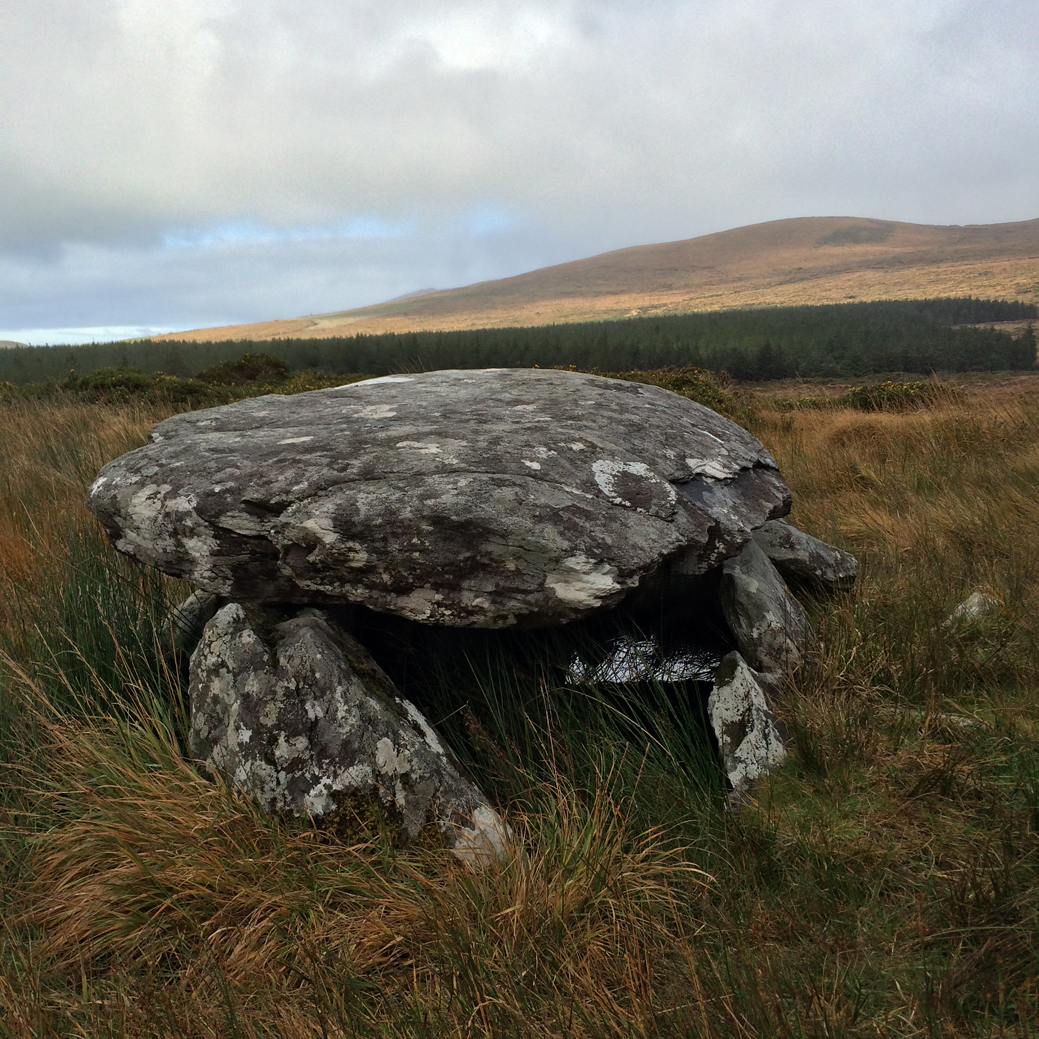




Scientists were astounded when tests showed the fragment, from a butchered brown bear, confirmed that humans were active in Ireland 2,500 years earlier than previously suspected.
The fragment was stored in a cardboard box in the National Museum for over 100 years but had only been subjected to detailed forensic tests over the past two years.
The incredible discovery by Dr Marion Dowd and Dr Ruth Carden will now re-write Ireland’s settlement history with the bone indicating that humans were hunting in Ireland in 10,500BC – some 2,500 years earlier that previously thought.
Amazingly, the bear bone was discovered in Clare back in 1903 but was left for over a century in a storage box in the National Museum without being forensically tested.
Dr Dowd of IT Sligo and Dr Carden of the National Museum decided to examine the bear bone and subject it to radiocarbon dating.

Seahan, with Seefingan (left) and Seefin (miiddle) in the background.

From one arm of the court towards the back of the tomb.



Looking from the rear of the chamber. The front part of the broken capstone rests on a portal stone. The other portal, visible here, has collapsed.


The capstone has snapped in two. This is from the rear of the chamber looking towards Slieve Gullion.



The cairn is just visible at the top of the shot.

Another view from just in the neck of the passage.


The tumbledown wreckage of the interior afforded us shelter from the blizzard today.

Roadside bullaun, taken from a field 300 yards north of here, I reckon.





South-east quadrant, with flooding between the inner and outer banks.


The road skirts the edge of the bank of the barrow.


The entrance to Owneygat is under the tree. There is another lintelled structure to the left, with various scattered megaliths in front of the entrance.

Zoom shot of Rath Cruachan from Rath na dTarbh. The bank of Rath na dTarbh is the linear earthwork with the v-shaped cut.


Archaeologists have uncovered what they believe to be the “best-preserved Bronze Age dwellings ever found in Britain”.

Towards Loch an Duín. The wedge tomb is up the hill behind the advancing Brian.


Large slab of a standing stone.

Site number 7 on the hardy, boggy and very wet archaeological trail around Loch an Duín.


Two roofstones remain, collapsing slowly.

Looking over the tomb towards Loch an Dúin hidden over the hill.


There is much more rock art in the vicinity, but this one is marked by it’s own info pole.

The rain helped bring out the very worn motif




The cist is on the marshy bit of brown ground as the lake flows into the river


Site on Sligo/Leitrim border may not have been found until now due to mountain setting
A hilltop tomb recently discovered close to the edge of Tievebaun mountain on the Sligo/Leitrim border may be more than 5,000 years old , according to the archaeologist who found it.
Michael Gibbons said a series of discoveries in this area – including animal enclosures, field systems, and booley settlements – suggests that there are layers of history spanning the Neolithic period, the iron age, the bronze age and the post medieval period on these uplands.
Mr Gibbons, who discovered other tombs in this area a decade ago, said that the hilltop tomb, which was a sacred site up to 3,500 BC, was probably not discovered before now because of its dramatic setting on the edge of the mountain.
More: irishtimes.com/news/science/tomb-thought-to-be-more-than-5-000-years-old-discovered-1.2422061
‘Scandal’ that oak road on Mayne Bog, dating to 1200-820 BC, not surveyed or preserved
The Midland bogs have always been places of mystery – vistas of burnt umber that every so often unearth prehistoric time capsules: vats of bog butter, golden hoards, the mummified remains of sacrificial corpses.
In Longford, the Iron Age road unearthed at Corlea Bog has become the county’s prime tourism attraction, with massive oak planks wide enough for two chariots to pass side by side. In 2005, the discovery of a grander and far longer oak road at Mayne Bog in Coole, Co Westmeath, was a cause of great excitement. The National Monuments Service established that it was no mere trackway, measuring up to 6m in width, and dating to 1200-820 BC – a 1,000 years older than Corlea.
Westland Horticulture, extracting peat from the site at the time, were expected to cease work immediately but the National Monuments Service did not issue a preservation order, nor record it in the Register of Historic Monuments.
More:
irishtimes.com/news/environment/bronze-age-road-in-midlands-turned-into-potting-compost-1.2368920
